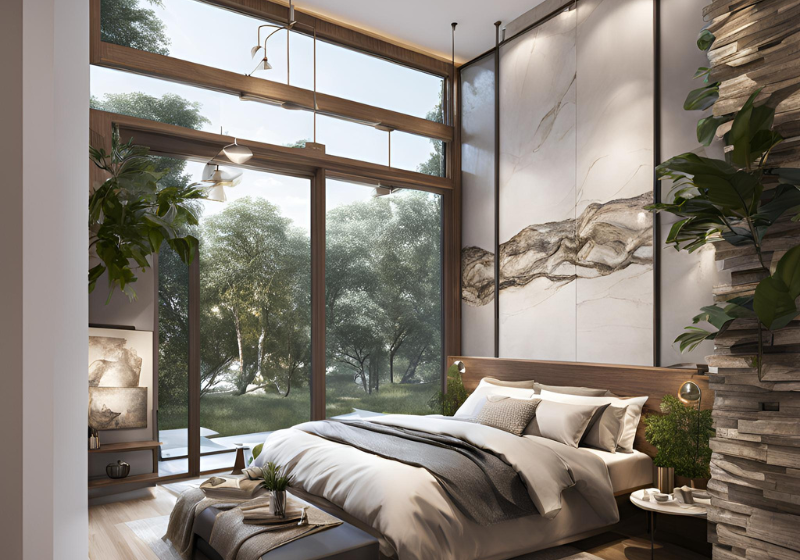Visual storytelling has become a cornerstone of successful projects in the ever-evolving world of architecture and design. Architectural rendering services—whether 2D or 3D—offer a powerful tool to bridge the gap between concepts and reality, enabling architects, designers, and clients to visualize the final product before construction begins. However, a common question arises: Are these services worth the investment?
At first glance, the cost of professional rendering is significant. But when weighed against the immense value they bring—improved client communication, reduced errors, enhanced marketing potential, and streamlined project execution—the return on investment becomes undeniable. In this blog, we’ll delve into the cost-versus-value equation of architectural rendering, illustrating why these services are not just an expense but a smart investment for anyone in the design and construction industry.
The Basics of Architectural Rendering Services
Architectural rendering services are an essential part of modern design and construction. They involve creating lifelike images or animations of buildings, interiors, or landscapes before they are built. These renderings are crafted using advanced software and are widely used by architects, designers, and real estate developers to bring their ideas to life.
The primary goal of architectural rendering is to give a clear visual representation of a design. It helps clients, investors, and other stakeholders understand what the final project will look like. For instance, a homeowner can see how their new kitchen or living room will appear, while developers can showcase an entire building to potential buyers.
There are different types of renderings, such as 3D exterior views, interior renderings, aerial perspectives, and walkthrough animations. Each type serves a unique purpose. Exterior renderings highlight the building’s façade and surroundings, while interior renderings focus on the design and materials inside the structure.
One of the main benefits of these services is that they help identify design flaws early in the planning stage. This saves time and money by reducing costly changes during construction. Additionally, renderings are a powerful marketing tool. They make it easier to sell properties and gain approval for projects by presenting designs in a visually appealing way.
In short, architectural rendering services combine creativity and technology to bring concepts to life, helping projects move forward with clarity and confidence.
Breaking Down the Costs of Architectural Rendering
Architectural rendering is a crucial tool for showcasing designs, but understanding its costs can be confusing. Here’s a simple breakdown of the factors that affect pricing.
1. Project Complexity:
The more detailed and intricate your design, the higher the cost. Simple renderings, like a single room, are more affordable than large-scale projects, like skyscrapers or sprawling landscapes.
2. Level of Detail:
Adding realistic textures, lighting, and furniture to your render increases its visual appeal but also raises the price. Photorealistic renderings, which look almost like real photos, require more time and advanced skills.
3. Number of Views:
Different perspectives are often needed to fully showcase a project. Each extra view adds to the cost because it involves additional work.
4. Turnaround Time:
Faster delivery usually comes with an extra charge. If you’re not in a rush, standard timelines are more cost-effective.
5. Software and Expertise:
Renderers use advanced software like 3ds Max, SketchUp, or Blender, and their expertise is a significant part of the cost. Experienced professionals may charge more but often deliver higher-quality results.
6. Custom Add-Ons:
Special features, like animations or virtual walkthroughs, are optional but can significantly increase costs.
Understanding these factors helps you plan your budget and choose the right level of rendering for your needs. Always communicate your vision clearly to the rendering team for the best value.
The Value Proposition: Why Renderings Are Worth It
Renderings are a game-changer in the world of design and construction. Whether you’re designing a home, a commercial space, or an outdoor area, renderings offer clear, visual representations of your ideas. But why are they worth the investment?
First, renderings save time and money. They help catch design mistakes early, long before construction starts. This reduces costly changes and ensures a smoother project timeline. For example, if a client sees something they don’t like in the rendering, it’s easy to adjust digitally instead of redoing physical work later.
Second, they improve communication. Renderings make complex ideas simple. Instead of trying to explain a blueprint to a client, you can show them a realistic 3D image or video. This way, everyone—from designers to contractors—understands the vision clearly.
Third, renderings help with decision-making. Clients can visualize different materials, colors, and layouts before making a choice. It removes the guesswork, giving confidence in the final product.
Finally, renderings enhance marketing. High-quality images and videos grab attention, especially online. They help real estate agents, architects, and developers stand out, attracting more clients and buyers.
In short, renderings are an investment that pays off by reducing risks, improving collaboration, and boosting sales. For anyone in the design or construction world, they’re a tool worth every penny.
The Future of Architectural Rendering
Architectural rendering is evolving rapidly, thanks to new technologies and creative advancements. In the past, renderings were simple hand-drawn sketches or basic 2D visuals. Today, they are lifelike 3D images that bring designs to life, helping architects and clients visualize spaces before construction begins.
The future of architectural rendering is even more exciting. One key trend is the integration of artificial intelligence (AI). AI tools can speed up rendering processes, suggest design improvements, and generate detailed visuals with minimal effort.
Another trend is real-time rendering, where changes to a design can be instantly reflected in a rendering. This allows architects to collaborate more effectively with clients and make adjustments on the spot.
Virtual reality (VR) and augmented reality (AR) are also transforming how we experience architectural renderings. With VR, clients can walk through a building before it’s built, exploring every detail as if they were there. AR overlays design onto real-world spaces, giving a clearer sense of scale and impact.
Sustainability is shaping rendering too. Architects are using renderings to show how green materials and energy-efficient designs will work in real life, supporting eco-friendly construction.
As technology continues to advance, architectural rendering will become faster, more realistic, and more accessible. These innovations will not only improve how designs are presented but also make the design process smarter and more efficient.
The future of architectural rendering is all about blending creativity with cutting-edge tools to build better spaces for everyone.
The End Note
Architectural rendering services are more than a visual aid—they are a critical investment in the success of design and construction projects. By blending creativity and technology, renderings transform abstract ideas into tangible visuals, enhancing communication, minimizing errors, and elevating marketing efforts.
While the costs of professional rendering may seem significant at first, the long-term value they bring—through streamlined workflows, better decision-making, and enhanced stakeholder collaboration—far outweighs the expense. Also, the rapid advancements in AI, VR, AR, and sustainability-focused rendering techniques promise a future where these services are even more accessible, efficient, and impactful.
In a competitive industry where innovation and precision define success, architectural renderings serve as a powerful bridge between vision and reality. They are not merely an expense but a strategic investment, ensuring that every project moves forward with clarity, confidence, and excellence. For architects, designers, and developers, embracing these tools is essential to building a future that’s both functional and inspiring.




